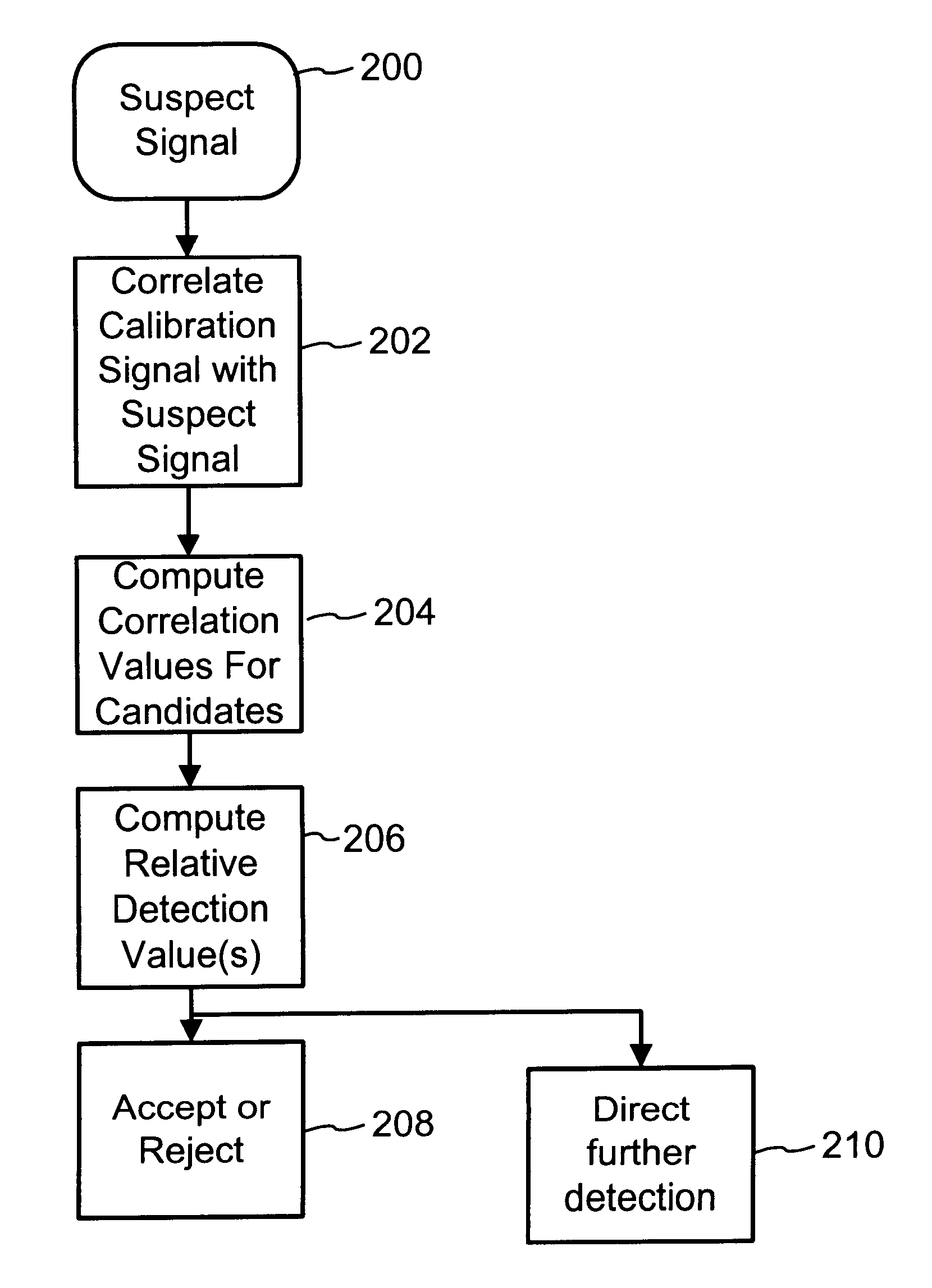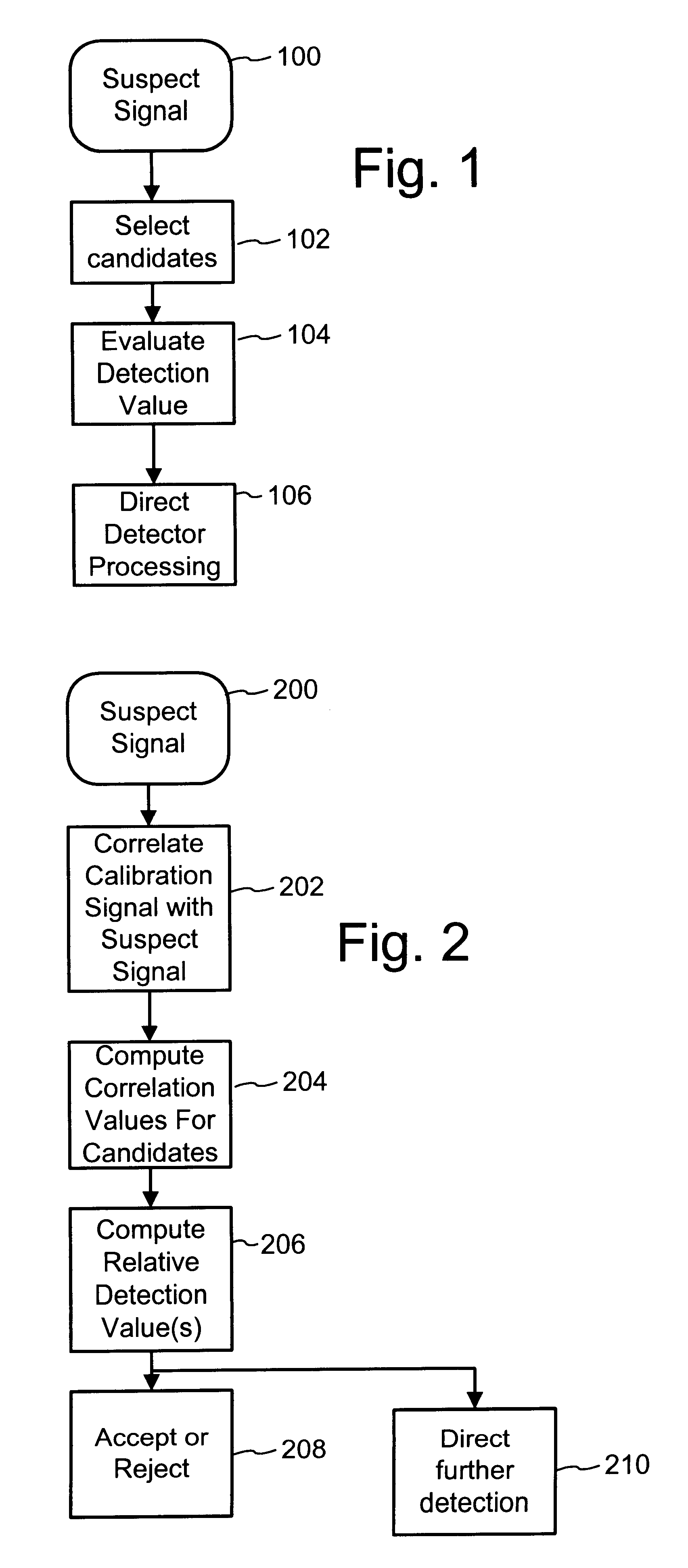Digital watermark screening and detecting strategies
a digital watermark and detection strategy technology, applied in the field of digital watermark detection, can solve the problems of decoding system not knowing whether there is a watermark, degrading the watermark, altering the orientation of suspect signals, etc., to increase the likelihood of accurate detection of a watermark and/or the recovery of a message embedded
- Summary
- Abstract
- Description
- Claims
- Application Information
AI Technical Summary
Benefits of technology
Problems solved by technology
Method used
Image
Examples
Embodiment Construction
FIG. 2 illustrates an example embodiment of a watermark detector that uses detection values to reject unmarked signals and to direct further detection actions. In this example, the detector correlates the calibration signal (or attributes of it) with the suspect signal (200, 202). In performing the correlation process, the detector may use a watermark key to select initial portions of the suspect signal expected to contain a watermark. For example, the key may specify that the calibration signal has been encoded into marked signals in a particular spatial or temporal location in some given transform domain.
The correlation process (202) computes correlation values for candidate portions of the suspect signal that exhibit some evidence of the calibration signal (204). A variety of correlation methods may be employed, including, for example general matched filtering. Each candidate may be defined by one or more orientation parameters that describe its location and orientation within th...
PUM
 Login to View More
Login to View More Abstract
Description
Claims
Application Information
 Login to View More
Login to View More - R&D
- Intellectual Property
- Life Sciences
- Materials
- Tech Scout
- Unparalleled Data Quality
- Higher Quality Content
- 60% Fewer Hallucinations
Browse by: Latest US Patents, China's latest patents, Technical Efficacy Thesaurus, Application Domain, Technology Topic, Popular Technical Reports.
© 2025 PatSnap. All rights reserved.Legal|Privacy policy|Modern Slavery Act Transparency Statement|Sitemap|About US| Contact US: help@patsnap.com



